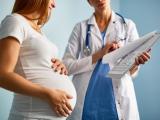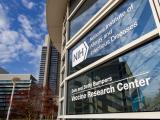Feb 8, 2012 (CIDRAP News) – International experts say that, while experiments on H5N1 avian flu transmission in mammals are important, publishing full details of such "dual-use" studies likely will not speed up the vaccine response in a pandemic, according to a news report and editorial in Nature today.
"I think the research is important, but not for vaccine purposes," said Richard Webby, PhD, of St. Jude Children's Research Hospital in Memphis, Tenn., in a Nature News story.
He was referring to two now-famous studies, led by Ron Fouchier, PhD, of the Netherlands and Yoshihiro Kawaoka, DVM, PhD, of the University of Wisconsin, that involved engineering an H5N1 virus and an H1N1-H5N1 hybrid that were transmissible in ferrets via airborne droplets. The Fouchier H5N1 virus was lethal in ferrets, but the Kawaoka hybrid was not.
The studies are slated to be published in Science and Nature, respectively. However, in December the National Science Advisory Board for Biosecurity (NSABB), which advises the US Department of Health and Human services and other agencies, recommended against publishing full details of the studies because of bioterrorism concerns. ("Dual-use" generally signifies research that can be used for both good and bad ends.)
The US government agreed with the NSABB, and a maelstrom has ensued over unfettered scientific expression versus concern over public health.
The Nature News report said that H5N1 mutation studies could benefit flu surveillance in the long term, according to flu experts, if genetic variations detected in nature are similar to those produced in the lab. Scientists underscored, however, that current flu surveillance systems are sorely lacking, and that a pandemic strain might derive from an entirely different series of mutations.
Another hurdle is economic and political: Governments are unlikely to invest in a vaccine based on strains that might one day cause a pandemic.
"Nobody is going to ramp up production of a pre-pandemic vaccine based on these two experimental viruses. That's 100% sure," said Webby. Bram Palache, global government affairs director for vaccines at Abbot Biologicals in Weesp, the Netherlands, agreed that industry will wait for a pandemic strain to be identified and governments to order doses.
Albert Osterhaus, PhD, a co-author on Fouchier's study, also agreed that industry will wait for the strain to be identified. But he said screening for mutations could detect variants that could be used to make new seed strains for vaccines, which could help during initial pandemic response.
However, Italian avian flu researcher Ilaria Capua, DVM, PhD, said, "The antigenicity of the virus depends less on any mutations than on where the HA and NA come from," referring to hemagglutinin and neuraminidase, the flu virus's surface proteins.
Jeremy Farrar, MD, PhD, director of the Oxford University Clinical Research Unit in Ho Chi Minh City, Vietnam, said that officials should focus resources on developing a vaccine that can be produced more quickly than the 6 months it now takes and on developing a universal flu vaccine. He said the two unpublished studies have underscored the pandemic potential of H5N1.
Editorial agrees
An accompanying Nature editorial agreed with the experts' assessment.
"Research to create mammalian-transmissible strains is vital basic science that could deepen our understanding of flu viruses, and of what allows a virus to jump from other species and spread easily in humans," the Nature editors wrote. "But scientists need to be more modest and realistic with their claims about the short-term public-health benefits of such research."
They cited the real-world example of 2009 pandemic H1N1 flu.
"Vaccines only became available months after the outbreak began, and after the first wave had peaked in many countries," they wrote. "Health systems were stretched despite the relative mildness of the pandemic. The mutant-flu research does nothing to prevent a repeat of this situation."
They also stressed that the two studies will have a minimal impact on flu surveillance in the short term: "Surveillance of influenza in animals is slow and patchy at best, and follow-up sequencing of samples more so. And the mutations that we know about are likely to be outnumbered by those about which we are still ignorant."
The editors emphasized that using H5N1 mutation studies to boost surveillance efforts by building a database of mutations is very worthwhile. They said that bolstering flu surveillance should be a public health priority but that it remains woefully underfunded.
The editorial also urged investing in more responsive vaccine technology but said the two studies contribute little at this point toward that goal. The benefit of such studies, it said, lies in longer-term drug development, which is not as important as vaccine progress.
The editorial concludes, "The fact that the risks seem to far outweigh the public-health benefits of the research, at least in the short term, means that there is no need to rush headlong into an expansion of the work. Rather, regulators and flu researchers must take whatever time they need to decide the best way for such work to proceed safely."
A call for lab biosafety
In related news, two biosecurity experts issued a plea today for proper laboratory security and safety measures for work on mutant transmissible H5N1 viruses.
Writing in Biosecurity and Bioterrorism, James W. Le Duc, PhD, and David R. Franz, DVM, PhD, listed some of the difficulties in maintaining biocontainment labs, such as high maintenance costs and the challenges of transporting specimens, as well as an inconsistent regulatory environment internationally.
Le Duc is the director of the Galveston National Laboratory in Galveston, Tex., and Franz is the vice president and chief biological scientist at the Midwest Research Institute in Kansas City, Mo., and a Department of Defense advisor. Franz is also an NSABB member.
They said the recently published National Academies of Sciences document Biosecurity Challenges of the Global Expansion of High Containment Biological Laboratories might help guide biosecurity discussions going forward.
"There is an overarching need to ensure that personnel working in biocontainment facilities around the world, and especially those considering work on this most dangerous pathogen, are well trained and that their facilities are adequately prepared and resourced," they wrote.
See also:
Feb 8 Nature News report
Feb 8 Nature editorial
Feb 8 Biosecurity and Bioterrorism citation



















